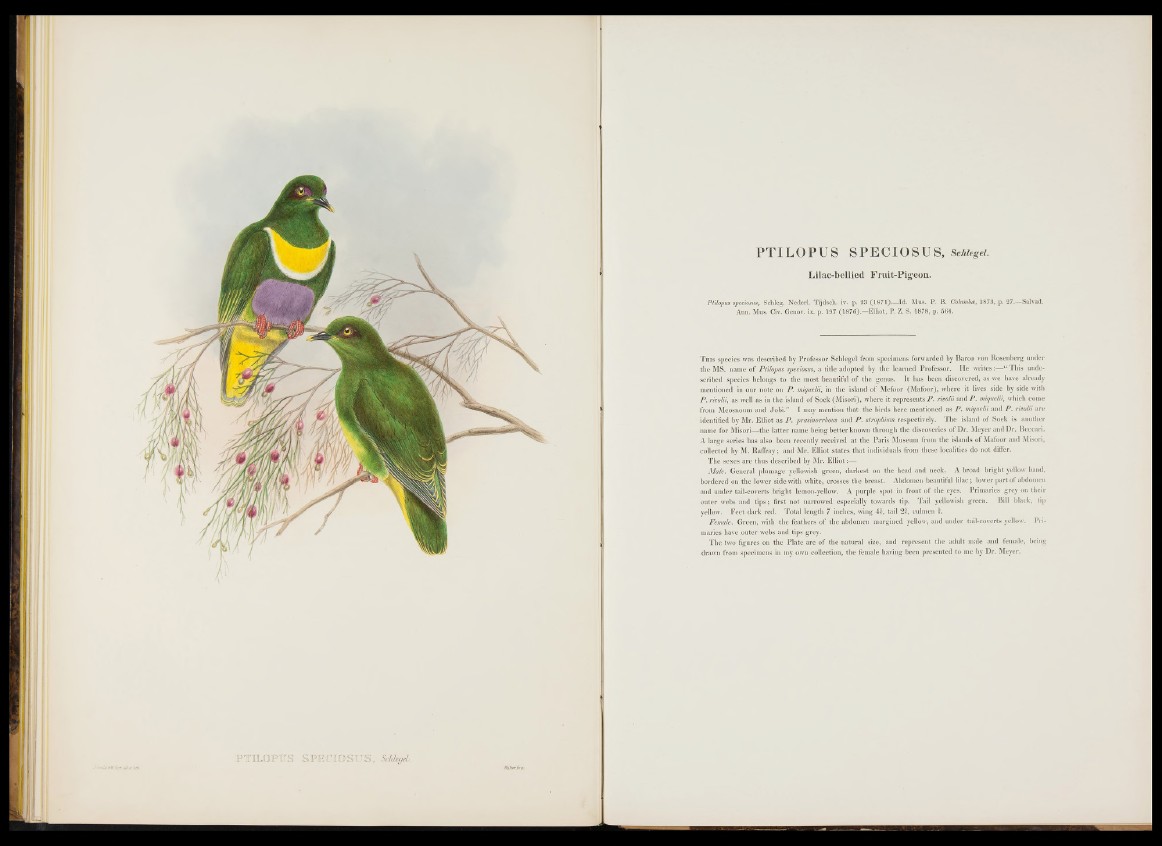
PTILOPUS SPECIOSUS, Schlegel.
Lilac-bellied Fruit-Pigeon.
Ptilopus speciosus, Schleg. Nederl. Tijdsch. iv. p. 23 (1871).—Id. Mus. P. B. Columba, 1873, p. 27.—Salvad.
Ann. Mus. Civ. Genov, ix. p. 197 (1 8 7 6 )—Elliot, P. Z. S. 1878, p. 564.
T his species was described by Professor Scblegel from specimens forwarded by Baron von Rosenberg under
the MS. name o f Ptilopus speciosus, a title adopted by the learned Professor. He writes:— “ This undescribed
species belongs to the most beautiful o f the genus. I t has been discovered, as we have already
mentioned in our note on P . miquelii, in the island o f Mefoor (Mafoor), where it lives side by side with
P . rivolii, as well as in the island o f Soek (Misori), where it represents P . rvoolii and P . miquelii, which come
from Meosnoum and Jo b i.” I may mention th at the birds here mentioned as P . miquelii and P . rvoolii are
identified by Mr. Elliot as P . prasinorrhous and P . strophium respectively. The island o f Soek is another
name for Misori— the latter name being b etter known through the discoveries o f Dr. Meyer and D r. Beccari.
A large series has also been recently received at the Paris Museum from the islands of M afoor and Misori,
collected by M. Raffray; and Mr. Elliot states th at individuals from these localities do not differ.
The sexes a re thus described by Mr. Elliot
Male. General plumage yellowish green, darkest on the head and neck. A broad bright yellow band,
bordered on the lower side with white, crosses the breast. Abdomen beautiful lilac; lower p art of abdomen
and under tail-coverts b right lemon-yellow. A purple spot in front o f the eyes. Primaries grey on their
outer webs and tip s ; first not narrowed especially towards tip. Tail yellowish green. Bill black, tip
yellow. Feet dark red. Total length ^ inches, wing 4f, tail 21, culmen f.
Female. Green, with the feathers o f the abdomen margined yellow, and under tail-coverts yellow. P rimaries
have outer webs and tips grey.
T he two figures on the Plate are o f the natural size, and represent the adult male and female, being
drawn from specimens in my own collection, the female having been presented to me by Dr. Meyer.